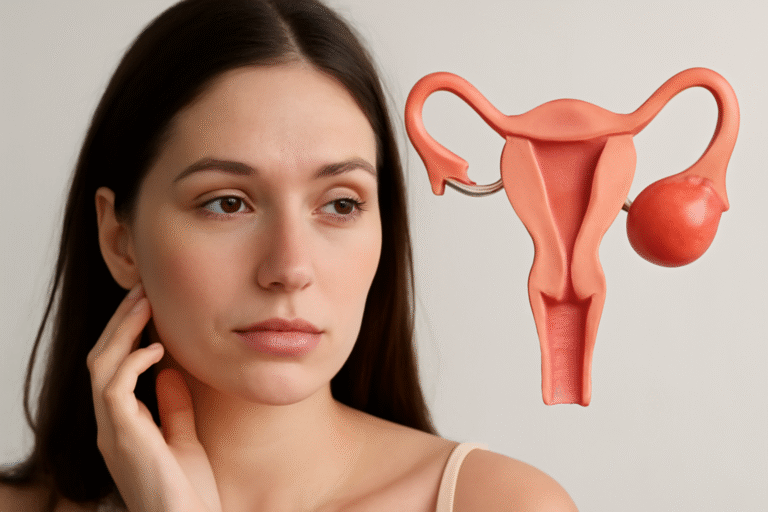If you’re trying to conceive, understanding your fertility window is one of the most crucial steps in the process. Among the various factors that impact fertility, knowing when you’re most fertile can increase your chances of getting pregnant. High fertility days refer to the specific period during your menstrual cycle when you are most likely to conceive. In this article, we’ll break down what high fertility days are, how to identify them, and tips to make the most of them in your journey to pregnancy.
What Are High Fertility Days?
Your fertility varies throughout your menstrual cycle, and the term “high fertility days” typically refers to the window when you’re most likely to get pregnant. This period is centered around ovulation, which is when your ovary releases an egg that can be fertilized by sperm.

A typical menstrual cycle lasts around 28 days, but it can vary from person to person. Ovulation usually occurs around the 14th day of a 28-day cycle, but this can fluctuate based on your unique cycle length. High fertility days include the five days leading up to ovulation, the day of ovulation itself, and sometimes the day after ovulation.
Also read: Fiber-Rich Foods that can Boost your Fertility
How to Identify High Fertility Days
Recognizing your high fertility days is key to timing intercourse for conception. Here are a few methods to help you track them:
1. Tracking Ovulation with a Calendar
If you have a relatively regular cycle, you can track ovulation using a simple calendar method. Start by marking the first day of your period on a calendar and calculate the approximate date of ovulation based on the length of your cycle. For example, if your cycle is 28 days long, ovulation typically happens around day 14. Count backward from this date to determine your high fertility days.
2. Basal Body Temperature (BBT) Charting
Your basal body temperature is your body’s temperature at rest. It fluctuates slightly around the time of ovulation. By measuring your BBT each morning before getting out of bed, you can identify a slight increase (about 0.5 to 1 degree Fahrenheit) in temperature, signaling that ovulation has occurred. This method works best when combined with other tracking methods.
3. Ovulation Predictor Kits (OPKs)
These kits detect the surge in luteinizing hormone (LH), which occurs just before ovulation. By using an OPK daily in the days leading up to ovulation, you can pinpoint your high fertility days more accurately.
4. Cervical Mucus Monitoring
Your cervical mucus changes consistency throughout your cycle. Around the time of ovulation, it becomes clear, slippery, and stretchy (often compared to raw egg whites). This is a sign that you’re in your most fertile period. Monitoring these changes can help you identify when you’re ovulating.
5. Tracking Symptoms and Signs
Some women experience physical symptoms of ovulation, such as mild cramping, increased libido, or breast tenderness. Keeping track of these symptoms can give you additional insight into when you’re most fertile.
Why Timing Is So Important
The egg only survives for 12 to 24 hours after ovulation, so timing intercourse around ovulation is essential. Sperm can survive inside the female reproductive system for up to five days, so having intercourse in the days leading up to ovulation increases the likelihood of sperm being present when the egg is released.
If you’re aiming to conceive, having sex during your high fertility days gives you the best chance of becoming pregnant. While it’s possible to get pregnant outside of this window, your odds are much lower compared to when you’re most fertile.
How to Maximize Your Chances During High Fertility Days
To boost your chances of conception, consider these tips during your high fertility days:
1. Have Regular Intercourse
Aim for regular intercourse every two to three days in the days leading up to and around ovulation. This ensures sperm is ready and waiting when the egg is released.
2. Avoid Lubricants That Can Harm Sperm
Many lubricants can create a hostile environment for sperm, reducing their chances of reaching the egg. If you need lubrication, opt for sperm-friendly options or natural alternatives like coconut oil.
3. Maintain a Healthy Lifestyle
A healthy diet, regular exercise, and stress management play a significant role in fertility. Ensure you’re consuming nutrient-rich foods, getting enough rest, and managing stress to create the best environment for conception.
4. Stay Positive and Patient
Conception can take time. Try to stay positive, relax, and enjoy the process. If you’re struggling after several months of trying, it may be worth consulting with a healthcare provider to rule out any underlying issues.
When to Seek Help
If you’ve been trying to conceive for over a year (or six months if you’re over 35) without success, it may be time to consult a doctor or fertility specialist. They can help assess both partners’ fertility and provide guidance on potential treatments to help you conceive.
Final Thoughts
Understanding and tracking your high fertility days is one of the most effective tools in your fertility journey. By paying attention to your body’s natural signs and using tracking methods, you can significantly increase your chances of conceiving. Remember, every woman’s body is different, so it’s important to find what works best for you. Patience, a healthy lifestyle, and the right timing can make all the difference in achieving your dream of becoming a parent.
If you have any questions or would like further guidance, don’t hesitate to reach out to a healthcare provider for personalized advice tailored to your needs.





[…] Also read: Boost Your Fertility: Tips for Identifying High Fertility Days […]
[…] Also Read: Boost your Fertility […]
[…] Also Read: Identify Your Fertility Days […]
[…] For anyone trying to conceive, the two-week wait can feel endless. The uncertainty, hope, and worry about timing can be overwhelming. What if you had a clear biological signal that indicated your most fertile days? This signal exists; it is called the luteinizing hormone (LH) surge. Understanding this important hormonal change is key to enhancing your fertility. […]